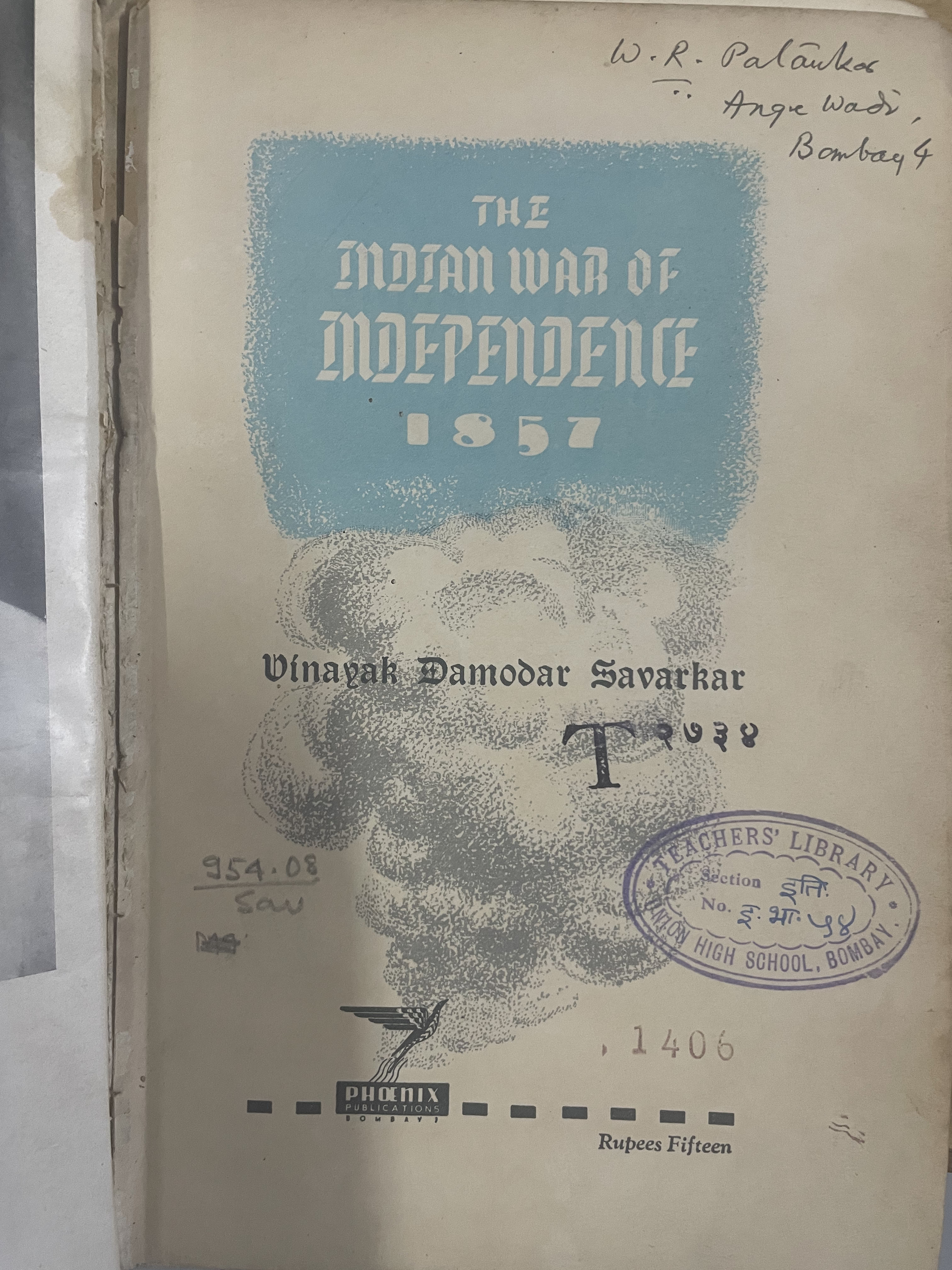The Indian War of Independence 1857

About
Summary
Exquisite
TOC
Details
Related
URL
Images
Overview
The Indian War of Independence – 1857 by Vinayak Damodar Savarkar, first published in 1909, provides a nationalist perspective on the Sepoy Mutiny, reinterpreting it as a planned and organized war for Indian independence. Savarkar, a revolutionary, was inspired by the heroism and suffering of the revolt's leaders. He aimed to ignite the fire of revolution and promote the ideal of complete political independence through armed revolt.Savarkar's The Indian War of Independence – 1857 challenges the British colonial narrative of the 1857 uprising, which was often dismissed as a mere Sepoy Mutiny. Savarkar argued that it was a deliberate and organized effort by Indians to overthrow British rule. The book is a detailed account of the uprising, highlighting the bravery and sacrifices of its leaders, and emphasizing the unity between Hindus and Muslims in their struggle against the British. Savarkar's work aimed to inspire a second war of independence by illustrating the events of 1857.
Importance of Book
Nationalist Interpretation of History: It provides a nationalist interpretation of the 1857 revolt, which had a profound impact on Indian historiography.
Inspiration for Revolutionaries: The book served as an inspiration for Indian revolutionaries and freedom fighters, fueling the struggle for independence.
Counter-Narrative to Colonialism: It offered a powerful counter-narrative to British colonial accounts of the uprising, challenging the legitimacy of British rule.
Promotion of Unity: The book promoted unity and harmony between Hindus and Muslims, fostering a sense of shared national identity.
Key Themes
Nationalism and Patriotism: The book is infused with a strong sense of nationalism and patriotism, portraying the 1857 revolt as a heroic struggle for national liberation.
Challenging Colonial Narratives: Savarkar directly challenges the British version of events, offering an alternative Indian perspective on the uprising.
Unity and Harmony: The book emphasizes the unity between Hindus and Muslims in their fight against the British, promoting a message of communal harmony and solidarity.
Revolution and Resistance: Savarkar advocates for armed resistance as the only way to achieve complete independence, inspiring readers to take up the cause of revolution.
Social Reform: Savarkar addresses the reasons behind some defeats in Indian history, pointing to social and cultural constructs. He realized that there were social ills within society, such as the caste system, which had caused a lot of damaging fallout, like failure to effectively counter combating invaders.
Cultural Significance
Gita of Revolutionaries: The book gained fame as the Gita of revolutionaries, becoming an important text for those fighting for Indian independence.
Banned Before Publication: The Indian War of Independence – 1857 is distinguished as the world's first history book to be banned even before its publication, highlighting its revolutionary potential and the threat it posed to British rule.
Wide Circulation: Despite the ban, the book was translated into multiple languages and circulated widely, inspiring Indians both at home and abroad.
Influence on Azad Hind Fauj: The book was read in the camps of the Azad Hind Fauj (Indian National Army), further demonstrating its influence on the freedom movement.
Effects on Society
Igniting Revolutionary Fervor: The book ignited revolutionary fervor among Indians, inspiring them to take up the cause of independence.
Shaping Nationalist Discourse: It played a significant role in shaping nationalist discourse and promoting a sense of Indian identity.
Challenging British Rule: Savarkar's work directly challenged the legitimacy of British rule, contributing to the growing demand for independence.
Inspiring Social Reform: Savarkar addressed the reasons behind some defeats in Indian history, pointing to social and cultural constructs. He actively took part in social reforms in Ratnagiri, establishing temples and cafes for people of all castes.
Conclusion
The Indian War of Independence – 1857’ was completed in 1909, its entry into India was banned by the Government before its publication could be organized. The ban was finally lifted by the Congress Government of Bombay in May 1946; now the first authorised edition of the book saw the light of day in India.
The Indian War of Independence – 1857 remains a controversial but influential work in Indian history. It provided a radical reinterpretation of the 1857 revolt, inspiring generations of nationalists and revolutionaries, and shaping the discourse on Indian independence..
Table of Content
Vinayak Damodar Savarkar\'s \"The Indian War of Independence 1857,\" published in 1947, is a seminal work that reinterprets the 1857 uprising as a national war of independence against British colonial rule. This work, originally published in 1909 as \"The First War of Indian Independence,\" was later revised and republished.While I can\'t provide the exact table of contents, the book typically includes the following sections:IntroductionOverview of the 1857 uprising and its significance.
Historical ContextAnalysis of the socio-political and economic conditions leading up to the revolt.
Early Stirrings of RevoltExamination of early resistance movements and grievances.
The Outbreak of RebellionDetailed account of the events leading to and the initial stages of the uprising.
Major Battles and Key FiguresDescription of significant battles, key leaders, and their roles in the revolt.
British ResponseAnalysis of the British military and administrative response to the uprising.
Aftermath and SuppressionThe consequences of the revolt, including the suppression of the rebellion and its impact on Indian society.
Legacy and InterpretationSavarkar\'s interpretation of the revolt\'s significance for Indian independence and its legacy in Indian history.
Title
The Indian War of Independence 1857
Author
Vinayak Damodar Savarkar
Name of Publisher
Phoenix Publications Bombay
Publish Date
1947
Subject
A seminal work that reinterprets the 1857 uprising as a national war of independence against British colonial rule
Vintage
1901-1947
Edition
First
Number of Pages
552
Category
Literary
Sub Category
History
Rarity
RARE
